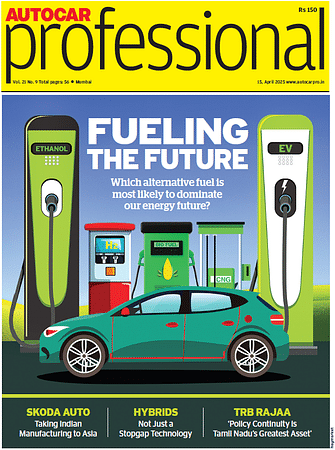Yokohama Rubber Develops First Theoretical Model to Predict Tire Wear
The model addresses the complex challenge of predicting wear behavior on multiscale surfaces, ranging from nanometer to centimeter levels.
Yokohama Rubber Co., Ltd. and rubber friction expert Dr. Bo Nils Johan Persson have developed the world's first theoretical model that can predict rubber wear rates on uneven road surfaces and the size distribution of wear particles. The research, completed in December 2024, was featured as the cover story in the February 21, 2025 edition of The Journal of Chemical Physics.
The model addresses the complex challenge of predicting wear behavior on multiscale surfaces, ranging from nanometer to centimeter levels. Testing in both dry and wet conditions across various contact pressures and sliding speeds demonstrated that the model's predictions closely matched experimental results for wear rates and particle size distribution.
Dr. Persson, who works at the Peter Grünberg Institute in Germany and Lanzhou Institute of Chemical Physics in China, brings extensive expertise in contact mechanics, friction, wear, and lubrication. Through his company Multiscale Consulting, he has supported numerous firms in the rubber industry, with his approach validated through peer-reviewed research.
The development comes at a crucial time as tire wear particles increasingly become an environmental concern, particularly with the rising adoption of heavier electric vehicles. Yokohama Rubber plans to continue its collaboration with Dr. Persson and Multiscale Consulting to develop tires with enhanced wear resistance.
The research aligns with Yokohama Rubber's current medium-term management plan, Yokohama Transformation 2026, which emphasizes efficient product development and technological innovation. The company has been strengthening its research capabilities through AI implementation and partnerships with academic institutions and industry organizations.
Tire wear prediction has long been a challenge for the automotive industry, with manufacturers relying primarily on physical testing and empirical data. This theoretical model represents a significant advancement in understanding and predicting tire wear behavior, potentially leading to more sustainable tire development and reduced environmental impact.
RELATED ARTICLES
Mercedes-Benz Expands Its Network in Southern India
Mercedes-Benz India expands its presence in Bengaluru and Hyderabad with the inauguration of three new service facilitie...
Craftsman Automation Begins Commercial Operations at New Kothavadi Facility
Craftsman Automation Limited has commenced commercial operations at its newly established manufacturing facility in Koth...
Delhi EV Policy 2.0: Ban on Petrol Two-Wheelers Not Included for Now
Earlier reports said that a ban on petrol-run two-wheelers was being considered for the upcoming policy.






 By Angitha Suresh
By Angitha Suresh
 24 Feb 2025
24 Feb 2025
 2159 Views
2159 Views




 Sarthak Mahajan
Sarthak Mahajan



 Autocar India
Autocar India

